Are you at a loss for a good way to soak willow rods and chair cane webbing or sheet cane? Here’s a great tip to help with your chair caning and willow basketweaving projects.
PVC pipe (used for plumbing jobs) with caps on both ends, one glued and one free, works very well as a soaking tube for willow rods as well as for soaking sheet cane or cane webbing.
If you don’t have a large soaking trough (or bathtub) for your willow or need to give a willow weaving demonstration, using a four-inch diameter by 4-6 ft. long PVC pipe soaking tubes filled with water works very well indeed!
You can also purchase shorter lengths for shorter lengths of willows suited for your individual needs.
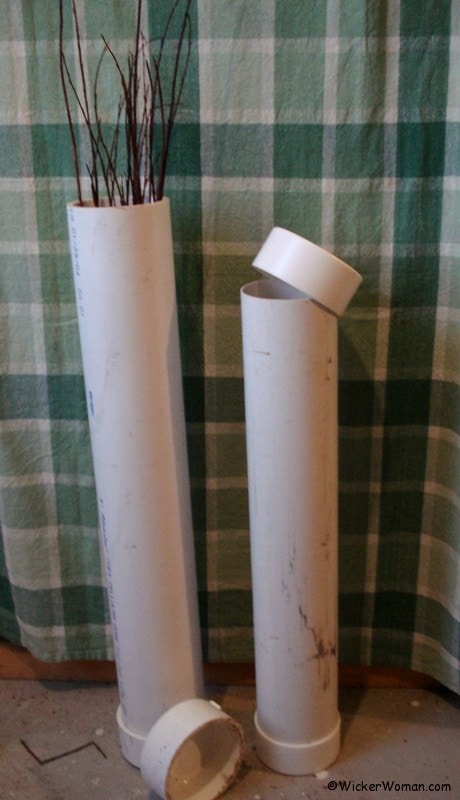
What are PVC soaking tubes?
This page may contain affiliate links so when you make a purchase through one of these links, I receive a small compensation without any extra cost to you.
PVC is made of polyvinyl chloride, a widely used thermoplastic material that can be molded into different shapes. It’s a modern replacement for metal pipes and is used extensively for plumbing, drainage, and also for ventilation.
PVC pipe, end caps, and special PVC glue can be purchased at your local hardware store, lumber yards, and any large home specialty store. Find them all in the plumbing department. It comes in any length you want and in various thicknesses of the pipe and caps.
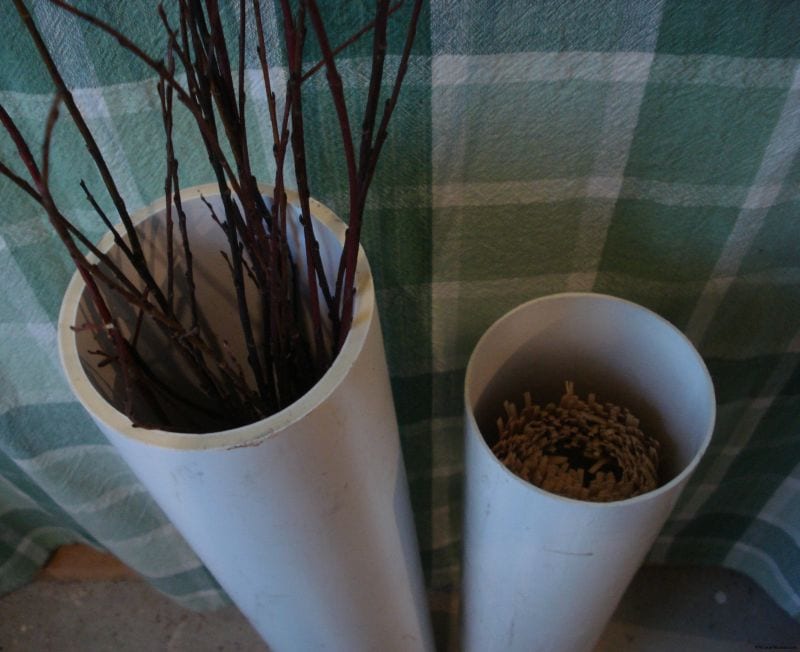
**The pictures of willow in the tubes that I’m using here in this blog post are not the correct length for the tube height. They are just serving as an example of tube height ratio to willow length.
There are two kinds of end caps, some are threaded and can be screwed on, and some just slip over the end of the tube.
I always use the pipes vertically, standing up and filled with water. So, I use two unthreaded end caps; one glued to the bottom of the pipe and use the other end cap without glue at the top.
But if you are going to lay the long tubes down, full of water to soak the willow, then using the screw cap might be the better choice for the top—less chance of leaking.
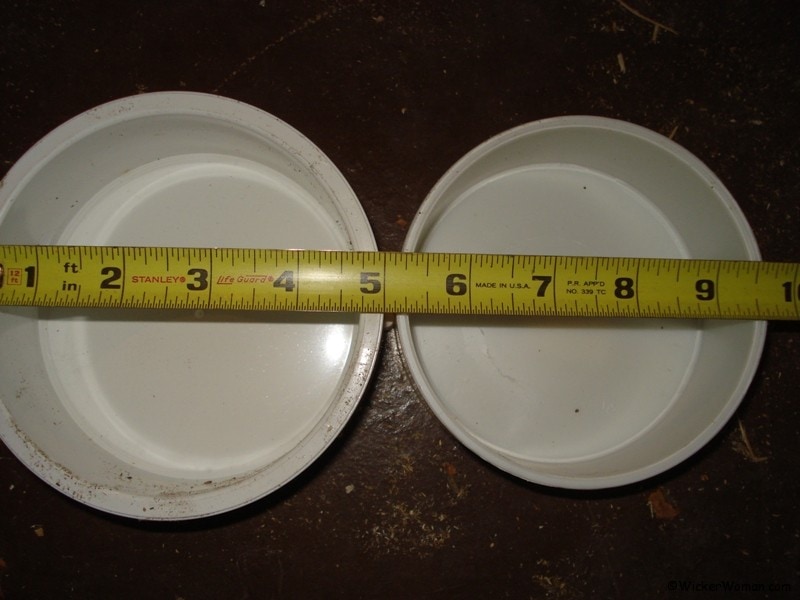
PVC soaking tubes are easy to travel with
Of course, if you are transporting a six-foot tube, you will need a vehicle that can accommodate such length.
And in case there isn’t any water accessible at the demonstration area, you can always bring along several gallon jugs of water to fill the tube.
It’s a good idea to pre-soak your willow at home before actually giving the demonstration. Since it usually takes several days of soaking to become pliable enough to weave with.
Many times folks watching your demonstration are curious to know how you prepare the willows. This process of using the PVC soaking tubes will give you the opportunity to share your method and extend the demo.
Filling a really long, six-foot PVC soaking tube at home can be a problem. Filling them from an outside faucet with a hose works best, as does hooking up a hose to the faucet of a utility tub inside your house.
Of course, that’s presupposing you have the room to do such things in your house or studio. And remember, those long PVC tubes are heavy and cumbersome when filled with willow and water!
How to position the PVC soaking tubes
If possible, it’s best to stand the tubing on end because the willow and sheet cane will float to the top of the water.
Willow rods need to be weighed down and totally submerged in the water to soak properly, surrounded completely by the water.
When you lay the PVC soaking tube down, instead of standing it up, more of the willow will float to the top lengthwise and will be exposed to the air, not submerged.
So make sure when you stand the pipe up, you also stuff the inside top end with something (thinking child’s plastic ball or plastic bags wadded up and held together with duct tape) so the willows don’t float to the top.
You can also use a shorter PVC pipe so the materials will not float to the top and be exposed.
Use PVC pipe for soaking cane webbing
Sometimes it’s just not practical to use your bathtub, kitchen sink, or even a utility sink to soak your cane webbing.
So these tubes make an excellent alternative that takes up very little space–only about four inches when you stand on end!
PVC pipe is also an excellent way to soak chair cane webbing or sheet cane because the whole “sheet” or piece of prewoven cane is surrounded by water.
You might consider purchasing a couple of different lengths of PVC pipe to accommodate various sheet cane widths. Or just stick to the longest tube that will work for the widest sheet cane webbing you use.
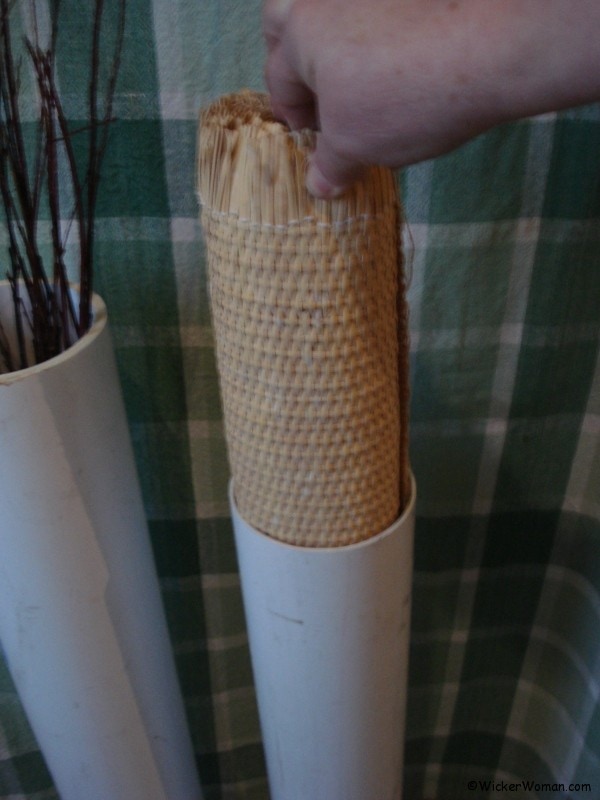
Steps to use a PVC pipe for soaking cane webbing
- Cut the cane webbing at least 2″ larger (on all four sides) than the size you need for repairing the chair seat
- Make sure you’ve already glued the bottom cap on the pipe and it’s fully secured
- Fill the pipe with warm water
- Coil the sheet cane up loosely to fit inside the tube
- Place the cane webbing vertically into the tube
- Put the top cap on and stuff something above the cane to weigh it down
- Leave the cane in the PVC soaking tube the recommended time for your project! Ta-da!
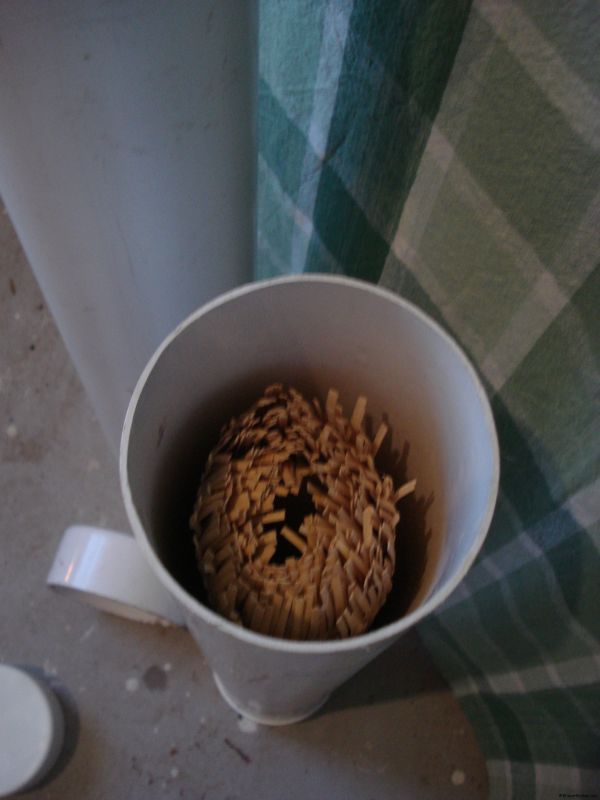
I hope you enjoyed the latest Chair Caning & Willow PVC Soaking Tubes–Tuesday Tips blog post.
Have you heard of this PVC soaking tube tip before? Or do you already use this method of soaking willow or cane webbing in PVC tubes?

What are your thoughts about this blog post?
Leave your comments below and share with your social networks!
~~Live Well, Laugh Often, Love Much ~~
Happy Weaving, until next time!



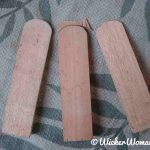
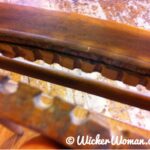


Hello –
When purchasing the 4 inch PVC pipe, ask if they can cut the lengths you need. I actually showed the guy cutting the pipe a picture from the web page and cut my pipe perfectly and was helpful to find the correct end caps + glue.
The gray water PVC pipe has a thinner wall and is less expensive. Draw back, you loose about a foot of pipe. For a 10 foot piece of 4 inch diameter pipe, I was able to get 2x 4 foot long pieces. The 2nd 10 foot pipe cut down to 1x 3 foot and 1x 6 foot piece.
You will need two part pipe glue for the end of pipe to prevent leaks.
I will start soaking my 6ft will starting today to use next weekend.
Thank you for sharing this willow soaking tip as my bathtub or purchasing a long enough water trough is not an option at this time…
Sincerely – Sonja (newbie)
Good idea Sonja, that’s something I have suggested before but forgot to mention in this particular blog post. Thanks for reminding me, I’ll add that to the post.
I tried this. But I asked the guy to cut the tubes so I could transport them and bought end caps. They weren’t cut very evenly and they leak. Do you think I could re cut them and glue the ends on ? Looks like it’s my only choice. I have loads of room but not sure how to go about making a soaking pit
All the best
Hi Aisling,
So sorry to hear that the store clerk didn’t cut the PVC tubes accurately! Yes, you can cut them yourself and use a reciprocal saw if you have one and make the cut even. And then the bottom cap MUST be glued using a special glue that’s blue in color and made especially for gluing PVC tubes. The plumbers use it all the time, I can’t remember what the name of that glue is right now, sorry.
Brilliant! It sure beats digging a trench and lining with plastic, or building a wood frame especially when lumber is expensive during Covid. I just happen to have a pipe! Thanks for the inspiration.
I am looking into basket weaving and was immediately put off by the trough problem. This pipe idea is ingenious and so simple and doable. Thank you, for sharing this, i am back on track looking for info with renewed hope that this is something I can do. : ) Happy New year Amanda
Glad to see you back
Thank you Vickie, nice to be back also and thanks for taking the time to leave a comment! I take it you’re coming from my old Wicker Woman’s Weavings ezine newsletter list on Yahoo! Groups? In response to the latest issue that went out yesterday to all the 800+ subscribers that I’m no longer sending the newsletter and to join me here instead? Or are you posting with regard to the blog migrating from the old platform on Blogger.com? Either way, be sure to subscribe to the blog so you don’t miss any posts! Cathryn